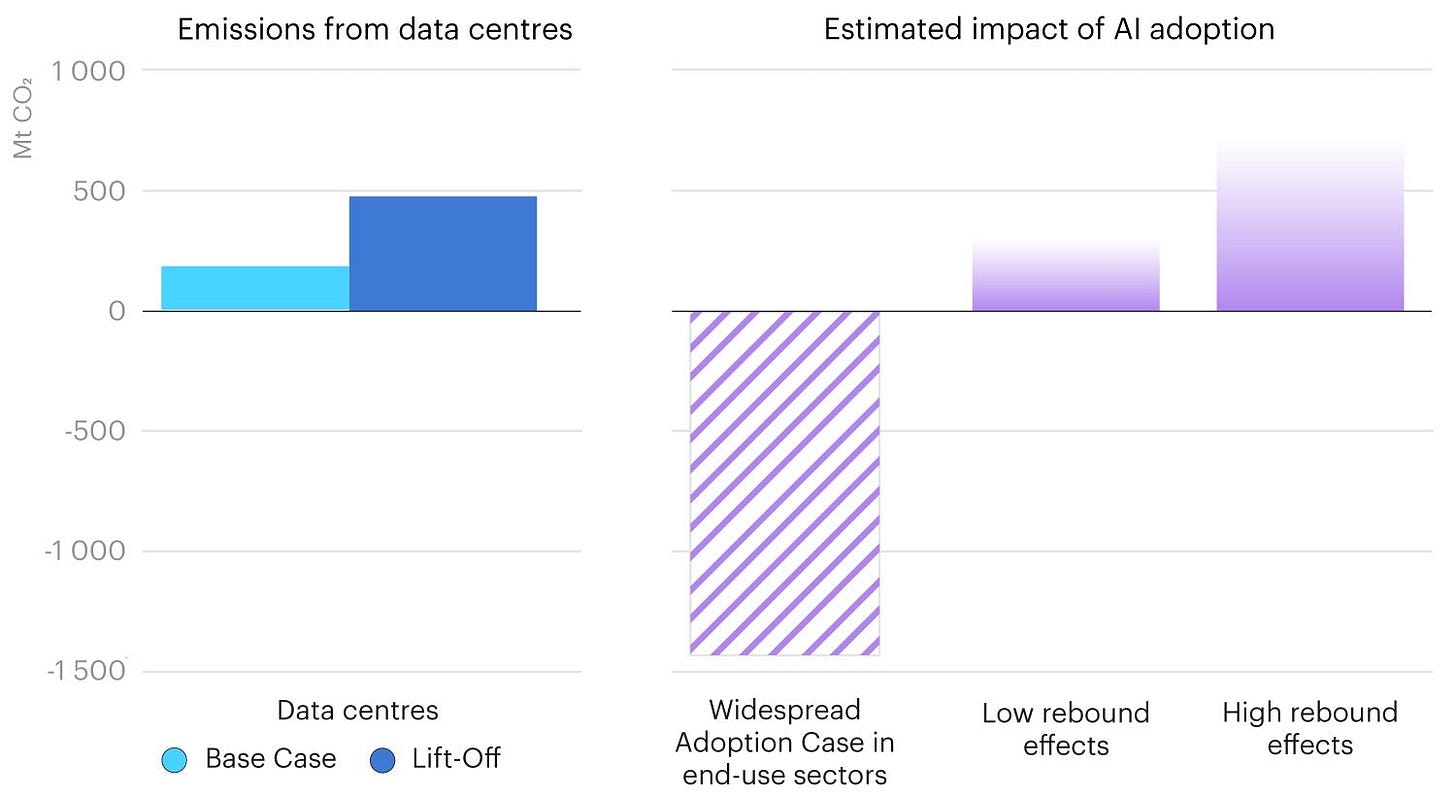The International Energy Agency published an analysis of artificial intelligence and energy in April 2025. It's the first that estimates emissions reductions that AI can assist with alongside emissions from the data centers that represent the backbone of AI. Below is their chart of emissions and AI’s emissions from optimizing within industries by 2035.
These kinds of projections are illustrative and always uncertain. The IEA scholars stress those uncertainties at multiple points. One source of uncertainty worth mentioning is the estimated rebound effects alongside these emissions reductions. These are the additional activities spurred by AI. You can think about them like the extra vacuuming your robot will do for you at home because you don't have to vacuum yourself. Outside of AI, a common example is fuel efficiency improvements increasing driving. In all cases, those rebounds represent life improvements. So, you shouldn't see the right-hand side of the graphic as a disappoinment.
Emissions are far from my primary policy concern. Still, in a debate fixated on AI’s environmental costs, the IEA’s recognition of AI’s potential climate benefits is a much-needed corrective.




